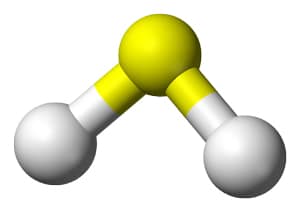
How It’s Used
Hydrogen sulfide (aka dihydrogen monosulfide; sewer gas; stink damp; sulfur dihydride; sulfureted hydrogen) is a colorless gas having a strong odor of rotten eggs. The major use of the compound is in the production of elemental sulfur and sulfuric acid. Hydrogen sulfide is also employed in the production of thiorganic compounds; alkali metal sulfides; and to separate deuterium oxide (heavy water) from normal water. It is utilized in metallurgy; in extreme pressure lubricants and cutting oils; and as an agricultural disinfectant.
Occupational Health/Toxicology
While hydrogen sulfide is well known as a highly toxic and flammable gas, one of its most insidious properties is that it quickly deadens the sense of smell, so victims may be unaware of its presence—thus preventing any attempts at self-rescue. Signs and symptoms of acute exposure to hydrogen sulfide may include tachycardia or bradycardia; hypotension, cyanosis (blue tint to skin and mucous membrane), cardiac palpitations, and cardiac arrhythmias. Dyspnea (shortness of breath), tachypnea (rapid respiratory rate), bronchitis, pulmonary edema, respiratory depression, and respiratory paralysis may occur.
Neurological effects include giddiness, irritability, drowsiness, weakness, confusion, delirium, amnesia, headache, sweating, and dizziness. Muscle cramping, tremor, excessive salivation, cough, convulsions, and coma may be noted. Nausea, vomiting, and diarrhea are commonly seen. Exposure to hydrogen sulfide gas may result in skin irritation, lacrimation, inability to detect odors, photophobia (heightened sensitivity to light), and blurred vision.
Full record on hydrogen sulfide from Hazardous Substances Data Bank (HSDB), a database provided by the US National Library of Medicine.
The hydrogen sulfide entry from NIOSH’s Pocket Guide to Chemical Hazards.
Monitoring Instrumentation
Check out Interscan’s full line of hydrogen sulfide gas detection/gas monitoring instrumentation.
